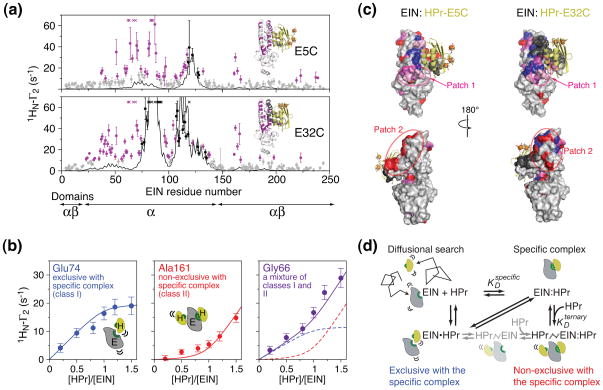Fig. 7.
Characterization of transient sparsely-populated encounter complexes for the interaction of EIN and HPr. (a) Comparison of experimental backbone amide intermolecular PREs (1HN-Γ2) (circles) observed on 15N-labeled EIN and arising from covalently attached paramagnetic tags (EDTA-Mn2+) located at two positions on HPr (E5C and E32C) with the PRE profiles calculated from the structure of the specific complex (black line). Black and purple circles indicate PREs attributable to the specific complex and to an ensemble of encounter complexes, respectively. (b) Intermolecular PREs as a function of added paramagnetically-labeled HPr(E5C) illustrating three types of titration behavior. (c) Mapping of intermolecular PREs attributable to the specific complex (black) and to the encounter complexes (class I, blue; class II, red; mixture of classes I and II, purple; and encounter complex PREs that are too large to measure accurately, pink). (d) Equilibrium binding model for the EIN/HPr association pathway. Adapted from [79]

